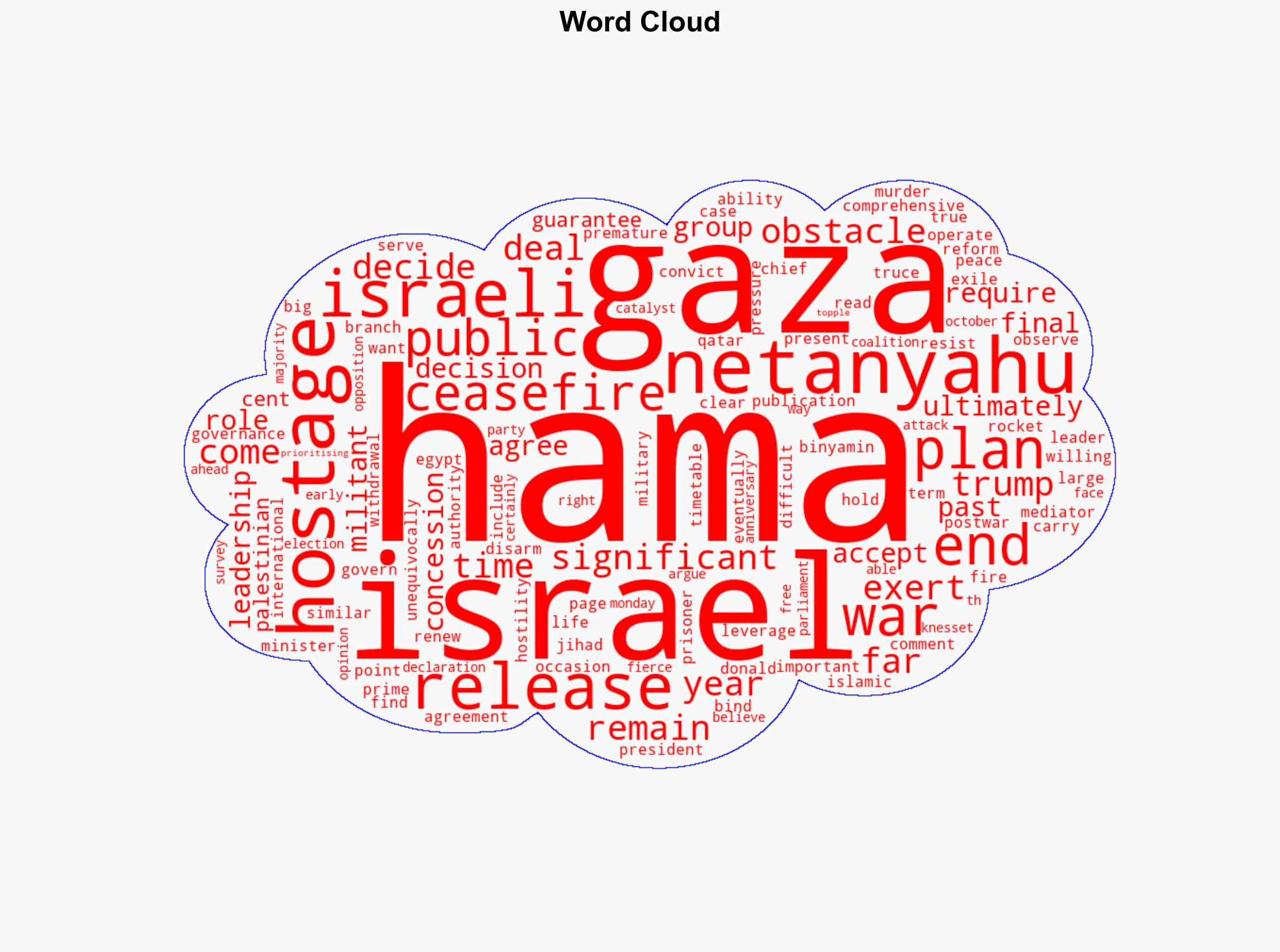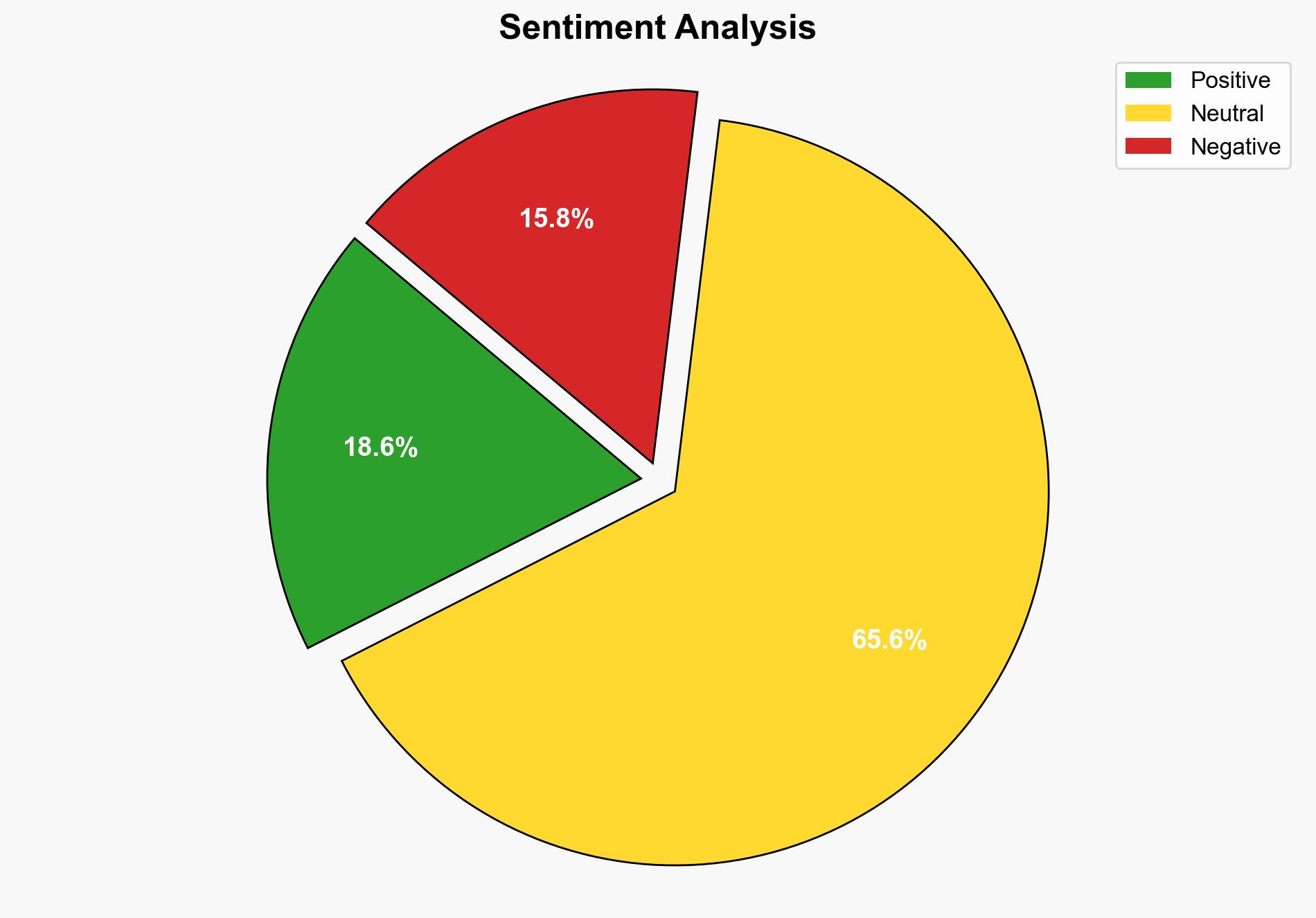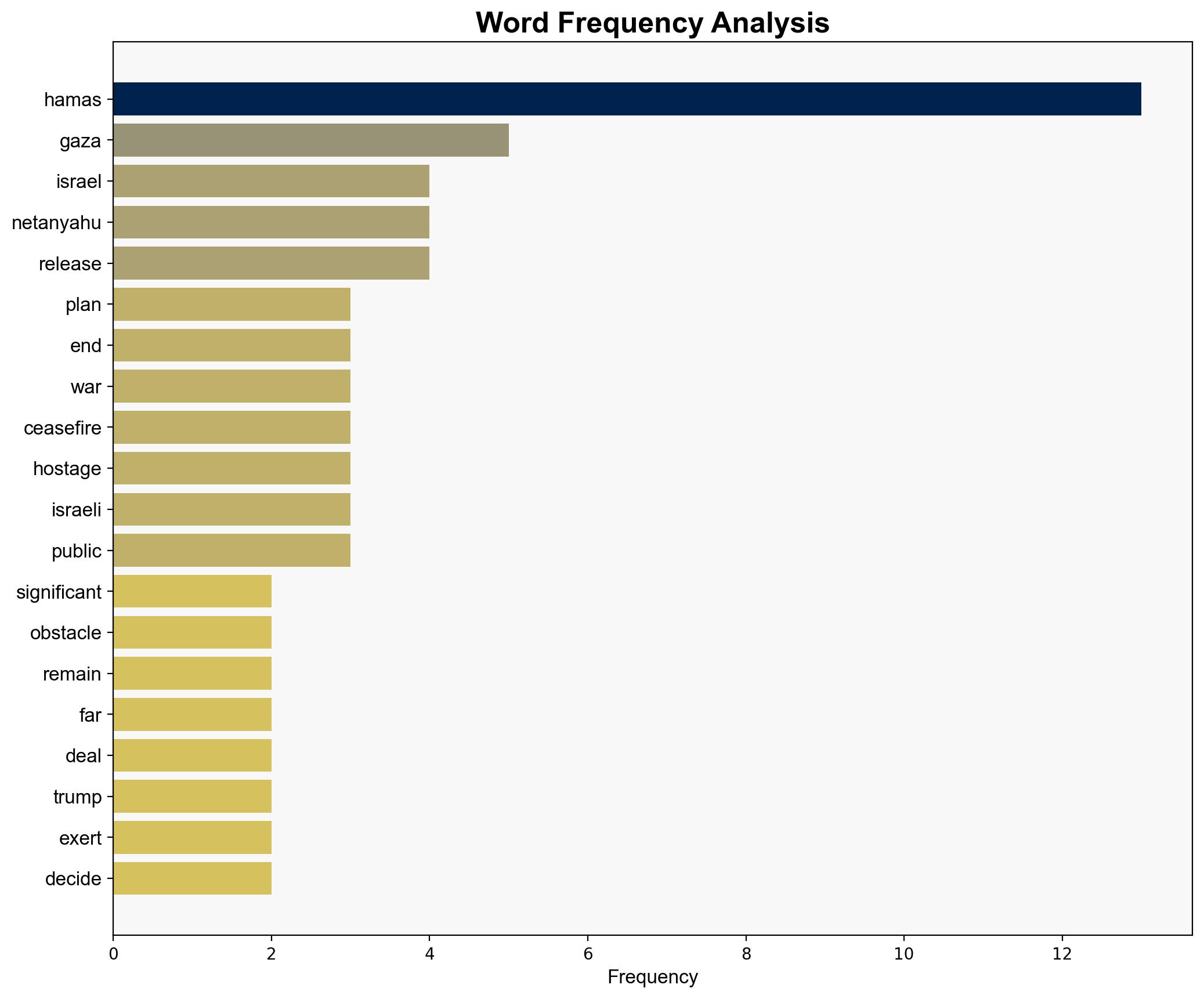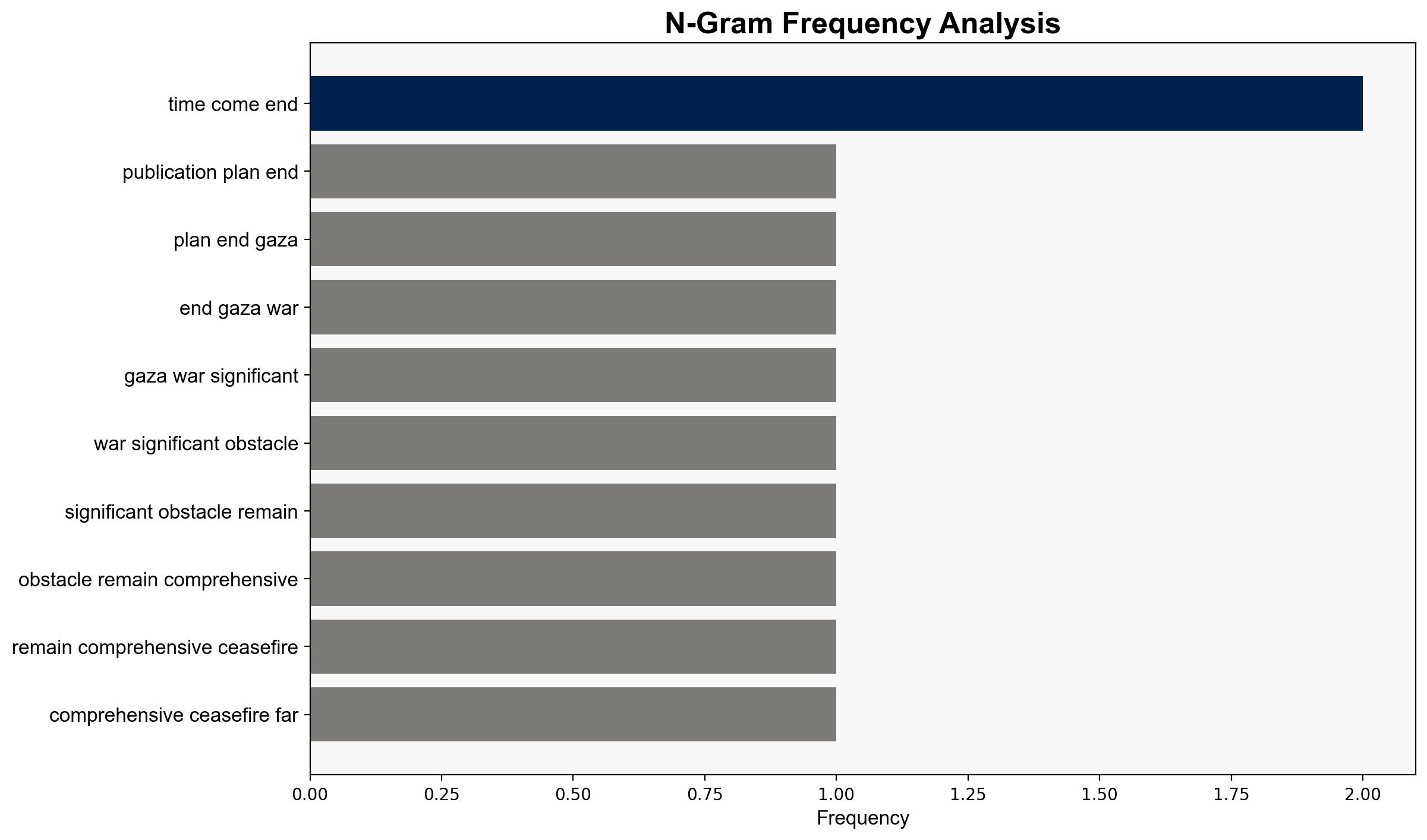Gaza peace plan is far from a done deal – The Irish Times
Published on: 2025-09-29
Intelligence Report: Gaza peace plan is far from a done deal – The Irish Times
1. BLUF (Bottom Line Up Front)
The most supported hypothesis is that significant obstacles remain for a comprehensive Gaza ceasefire due to internal and external political pressures on both Israel and Hamas. Confidence level: Moderate. Recommended action: Engage in multilateral diplomacy to address key sticking points, such as disarmament and governance, while preparing for potential escalations.
2. Competing Hypotheses
Hypothesis 1: A comprehensive ceasefire is unlikely in the near term due to entrenched positions and lack of mutual concessions. This is supported by the difficulty in disarming Hamas and the political risks for Israeli leadership.
Hypothesis 2: A ceasefire could be achieved if external mediators, such as Qatar and Egypt, successfully leverage their influence over Hamas, and if Israel’s leadership can navigate domestic political challenges to make necessary concessions.
Using the Analysis of Competing Hypotheses (ACH) 2.0, Hypothesis 1 is better supported due to the current lack of movement on key issues like disarmament and governance, and the strong opposition within Israeli politics.
3. Key Assumptions and Red Flags
Assumptions:
– Hamas leadership is unified and capable of enforcing a ceasefire.
– Israeli political dynamics will allow for concessions.
Red Flags:
– Potential overestimation of external mediators’ influence on Hamas.
– Underestimation of internal divisions within Hamas.
– Lack of clarity on the role of the Palestinian Authority in postwar governance.
4. Implications and Strategic Risks
Failure to achieve a ceasefire could lead to prolonged conflict, increasing regional instability. Economic impacts include disruption of trade and humanitarian aid. Geopolitically, continued conflict may strain international relations and fuel extremist narratives. Potential escalation could involve broader regional actors, increasing the risk of a wider conflict.
5. Recommendations and Outlook
- Engage in diplomatic efforts to facilitate dialogue between Israel and Hamas, focusing on incremental confidence-building measures.
- Encourage international stakeholders to provide security guarantees and economic incentives for peace.
- Scenario Projections:
- Best Case: Successful ceasefire with international oversight and gradual normalization of relations.
- Worst Case: Escalation into a broader regional conflict involving multiple state and non-state actors.
- Most Likely: Continued sporadic violence with intermittent ceasefire attempts.
6. Key Individuals and Entities
– Donald Trump
– Binyamin Netanyahu
– Hamas leadership
– Mediators from Qatar and Egypt
7. Thematic Tags
national security threats, regional focus, conflict resolution, diplomatic negotiations





